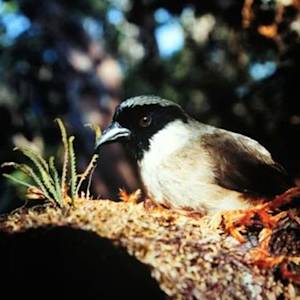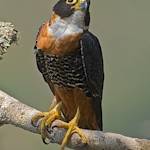Pink Pigeon
2000 CE • Mauritius
"Back in the 1980s there were just ten or so pink pigeons left in the wild. Known to scientists as Nesoenas mayeri, the species is found only on Mauritius, the Indian Ocean island that was once home to the dodo. Like the dodo, the pink pigeon made an easy target for cats, rats and other predators introduced by humans, who also chopped down almost all of their native forest. Unlike the dodo, however, the pink pigeon has since made a remarkable recovery. Fortunately, the Mauritian Wildlife Foundation had already taken 12 birds from the wild in the 1970s and 80s to establish a captive population. The offspring of these birds were then released during the 1990s and early 2000s and there are now at least 400 living in the wild. The species has even been officially down-listed twice, from "critically endangered" to "vulnerable"." Despite the pigeon's recovery, the species is still vulnerable. Recent studies revealed that the Pink pigeon has a high genetic load of bad mutation due to the historic population bottleneck, which puts the species at an extinction risk within the next 100 years without rigorous conservation efforts.
Cock Van Oosterhout and Jim Groombridge, "Mauritius: Pink Pigeons in Mauritius Made a Remarkable Comeback From Near-Extinction - but Are Still Losing Genetic Diversity," The Conversation, May 13, 2022.
Olivia Miller, "Pink pigeon population increases but extinction risk remains high," University of Kent News Centre, May 13, 2022.
Charles J. Sharp, CC BY-SA 4.0, via Wikimedia Commons


Learn about Maya Lin’s fifth and final memorial: a multi-platform science based artwork that presents an ecological history of our world - past, present, and future.

Discover ecological histories and stories of former abundance, loss, and recovery on the map of memory.

Learn how we can reduce our emissions and protect and restore species and habitats – around the world.

See how art can help us rethink the problems we face, and give us hope that each one of us can make a difference.

Help make a global memorial something personal and close to home. Share your stories of the natural world.


